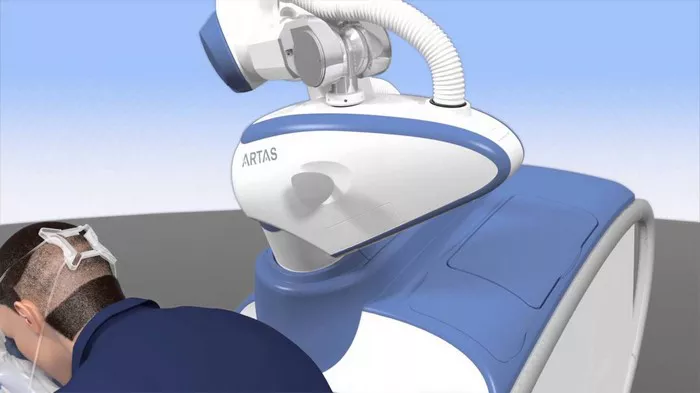Hair transplantation is a meticulous procedure that requires careful post-operative care to ensure the best possible outcomes. One of the essential components of this care is the use of saline solution. This simple yet effective solution plays a crucial role in the healing process. In this article, we will explore the seven primary reasons why saline is used after hair transplantation.
1. Keeps the Scalp Clean
Prevents Infection
Saline solution helps to keep the scalp clean, reducing the risk of infection. After a hair transplant, the scalp has many tiny wounds from where the hair follicles were extracted and implanted. These wounds are susceptible to infection if not properly cared for. Saline, being a sterile solution, helps to cleanse these wounds without introducing harmful bacteria or irritants.
Gentle Cleaning Agent
Unlike other cleaning agents, saline is gentle and does not irritate the scalp. Harsh chemicals can cause inflammation or allergic reactions, complicating the healing process. Saline provides a mild yet effective means of keeping the scalp free from dirt and contaminants.
2. Promotes Healing
Moist Environment
A moist environment is conducive to healing. Saline solution keeps the transplanted area moist, which is crucial for the newly implanted hair follicles to take root and thrive. Dryness can lead to scabbing and crust formation, which can disrupt the healing process and potentially dislodge the newly transplanted follicles.
Reduces Scabbing
By keeping the scalp moist, saline reduces the formation of scabs. Scabs can be detrimental as they might pull out the grafts when they fall off. Regular application of saline ensures that scabs are minimized, allowing the grafts to remain securely in place.
See Also: 7 Things That Will Happen Ten Years After Hair Transplantation
3. Soothes Irritation
Reduces Itching
After a hair transplant, patients often experience itching as the scalp heals. This itching can be uncomfortable and tempting to scratch, which could damage the grafts. Saline solution soothes the scalp, reducing the urge to scratch and thus protecting the integrity of the transplanted hair.
Minimizes Inflammation
Saline also helps to reduce inflammation. The salt content in saline can have a mild anti-inflammatory effect, calming the scalp and reducing redness and swelling. This contributes to a more comfortable recovery process.
4. Enhances Graft Survival
Optimal Conditions for Follicles
The survival of transplanted hair follicles is crucial for the success of a hair transplant. Saline provides the optimal conditions for these follicles by keeping the scalp clean, moist, and free from infection. This nurturing environment allows the follicles to establish themselves and grow into healthy hair.
Prevents Dehydration
Hair follicles can be sensitive to dehydration. Saline prevents the transplanted area from drying out, ensuring that the follicles remain hydrated and healthy. This is especially important in the initial days following the transplant when the follicles are most vulnerable.
5. Facilitates Easy Removal of Blood and Crusts
Gentle Cleansing
After a hair transplant, it is common to have some blood and crust formation around the graft sites. Saline solution helps to gently cleanse these areas without causing trauma to the newly implanted follicles. This gentle cleansing is crucial to prevent any disturbance to the grafts.
Aids in Monitoring Healing Progress
Regular use of saline makes it easier to monitor the healing progress. By keeping the area clean and free from blood and crusts, any signs of complications can be detected early. This allows for timely intervention and ensures a smoother recovery process.
6. Prevents Complications
Reduces Risk of Infections
One of the primary concerns after a hair transplant is the risk of infection. Infections can compromise the success of the transplant and lead to further complications. Saline solution, being sterile, helps to reduce this risk significantly by maintaining a clean and hygienic environment.
Avoids Chemical Irritation
Many antiseptic solutions contain chemicals that can irritate the sensitive scalp. Saline, however, is free from such chemicals, making it a safer alternative for post-operative care. This reduces the likelihood of adverse reactions and complications.
7. Supports Overall Comfort
Relieves Discomfort
Saline solution provides relief from the discomfort associated with the healing process. It can help to alleviate symptoms such as dryness, tightness, and itching, making the recovery period more comfortable for the patient.
Promotes Confidence in Healing
Knowing that the scalp is being cared for with a safe and effective solution promotes confidence in the healing process. Patients can feel assured that they are taking the necessary steps to ensure the best possible outcome from their hair transplant.
Conclusion
Using saline solution after a hair transplant is a simple yet highly effective way to support the healing process. It keeps the scalp clean, promotes healing, soothes irritation, enhances graft survival, facilitates easy removal of blood and crusts, prevents complications, and supports overall comfort. By incorporating saline into the post-operative care routine, patients can ensure a smoother recovery and increase the likelihood of successful hair transplant results.
Hair transplantation is a significant investment in one’s appearance and self-confidence. Proper post-operative care, including the use of saline solution, is crucial to protect this investment and achieve the desired outcome. Always follow the guidance of your medical professional and adhere to the recommended care routine to ensure the best possible results from your hair transplant.
Related topics:

